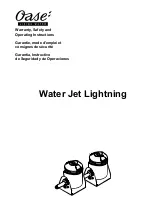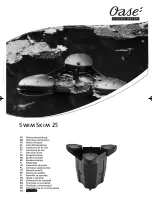
100c
User Manual
50
ch
.
7
High Carbon Steels (Spring Steel / Tool Steel)
High carbon steel welds easily but may become brittle after the welding process . To avoid weld
failure the part must be heat treated after the welding process .
Cobalt Chrome Alloys
Cobalt Chrome is very sensitive to oxygen contamination . If there is insufficient argon coverage or
oxygen present in the argon gas this alloy will crack . Once oxygen embrittlement has occurred the
weld area must be removed (via grinding etc) to prevent future cracking over the same area .
Copper
Copper is one of the more difficult alloys to weld because of its high heat capacity and high
thermal conductivity . These factors make it even more difficult to weld than silver . Copper also
requires more energy than silver for the weld to take place (about 30% more) . Thin copper,
however, welds very easily and lower energy is typically sufficient to produce very strong welds .
For thicker copper similar techniques as those employed to weld silver must be used .
Brass
Brass is a material that contains a large amount of zinc - 30 -37% zinc by composition . The
remaining material is copper .
As discussed previously, zinc is a hard metal to pulse arc weld or resistance weld because of its
low melting and boiling temperature (420 deg C, 907 deg C) .
During the melting process the low temperature zinc evaporates/boils out of the brass alloy .
For low energies this simply coats the surrounding material in a black zinc film that can easily be
removed with a glass brush .
For larger pulse arc weld energies the black coat can cover larger areas and porosity can develop
at the weld location as zinc boils from the weld .
Joining Different Metals
Welding different metals together will produce a new alloy at the weld location . The new alloy will
have different properties (although in many cases similar properties) to the base metals . Some
metals combine well, forming a strong and useful new alloy . Other metal combinations are weak
and brittle .
Helpful Hints for Combining Different Metals
1 . Check the new alloy strength with scrap material to ensure the joint will turn out as expected .
2 . You may need to weld over the joint location several times to get complete mixing of the
weld pool and a uniform new alloy . In most cases this is not necessary for a strong joint and
the first weld will be sufficient .
3 . Some material combinations may benefit from a third metal at the joint which forms a
better/stronger alloy with the two primary metals .











































